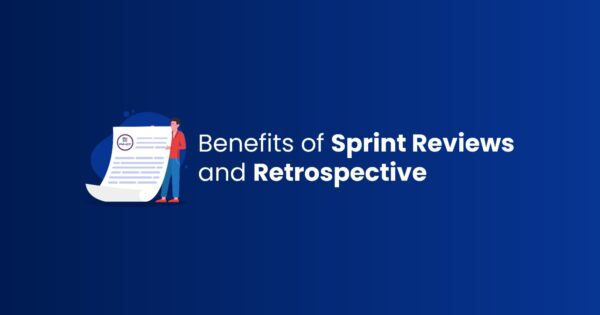
Introduction:
Sprint Review is a crucial component in Scrum, helps to ensure that the team & Stakeholders are aligned on the Progress of the Project. This meeting provides an opportunity to inspect the increment of work completed during the sprint & adapt the product backlog if necessary. A perfectly-determined sprint Review equipped with transparency, collaboration, and continuous improvement. This blog will explore the Sprint Review in detail and provide a best practices checklist to ensure its effectiveness. Understand about Sprint Review & Its Benefits:
What is a Sprint Review?
A Sprint Review is a collaborative event in the Scrum framework held at the end of each sprint, where the Scrum Team presents the completed work to stakeholders, gathers feedback, and discusses progress towards the product goal, leading to potential updates in the Product Backlog based on the feedback received, all within a timeboxed session to ensure efficiency and focus. To understand better utilization of Sprint Review complete the CSM Certification Training.
Benefits of Sprint Review Best Practices:
A well-conducted sprint review can greatly enhance the success of your Agile project. To highlight the value of the Sprint Review Meeting understand the benefits now:
- Advanced Reactivity to the Stakeholder Request:
Giving an organisation the flexibility to react swiftly to change is one of the main goals of the Agile methodology. It is made possible, in large part, by Sprint Reviews, which enable a marketing team to present the fruits of their labour every two weeks (assuming the most popular Sprint duration).
The team can hear directly from stakeholders when the delivered deliverables fall short of their expectations, and they can respond swiftly to satisfy their needs in the next Sprint. Furthermore, the backlog can be modified in front of stakeholders and the team, promoting openness and synchrony if the marketing environment changes and some of the scheduled deliverables become obsolete.
- Improved Marketing Deliverable Standards:
Marketers may use the Sprint Review as a fantastic tool for quality assurance. Identifying quality issues that must be noticed throughout the internal review process is possible because the Marketing Owner and stakeholders present and evaluate each delivery concurrently.
After the meeting, all attendees are welcome to share ideas during the discussion on how to keep things like this from happening again and guarantee that the team produces deliverables of the highest caliber.
- Enhanced Group Spirit:
Each team member can interact with those who assess their work during a Sprint Review. It’s an excellent approach to being acknowledged for outstanding work and getting the public to notice your hard work. To facilitate fully transparent functioning and foster a feeling of purpose and belonging among the various groups within the business, Sprint Review is crucial to break down barriers through the Review.
The Advantages Of Sprint Retrospective
Here are some advantages of Sprint Retrospective Meeting:
- Transparency Through Efficient Sprint Retrospective Meetings:
Leaders’ credibility and belief in the organization’s future success can positively impact organizational engagement. Effective sprint retrospective meetings enable team members to feel comfortable sharing their opinions, addressing relevant aspects, and posing meaningful questions regarding the completed project. To fully leverage the benefits of the Sprint Retrospective, completing the A-CSM Course is essential. Leaders who create a safe space through openness and kindness can encourage team members to share their thoughts on how the group can improve its collaboration in future projects. Sprint retrospectives can thus foster a communicative and cooperative atmosphere.
- Active Participation from Team Members and Leaders:
Leaving all the conversations to the stakeholders and product owners during these meetings is one error some team members may make. Team members may feel more motivated and more likely to offer ideas if they can express their opinions and participate in the meeting’s development. It can include problems before, during, or following the previous project.
- Continuous Progress & improvement Detection:
An additional benefit of these gatherings is this. Teams can reduce risks by recognising and mitigating issues that may arise in the upcoming sprint by reviewing the Sprint review and retrospective outcomes of the previous sprint and identifying the problems that the teams faced. It allows team members to spot potential issues early on.
- Early Problem Identification in the Project:
Effective retrospective meetings offer a potentially highly significant benefit. Teams can more quickly detect improvements throughout projects by using these meetings to recognise when they are making progress.